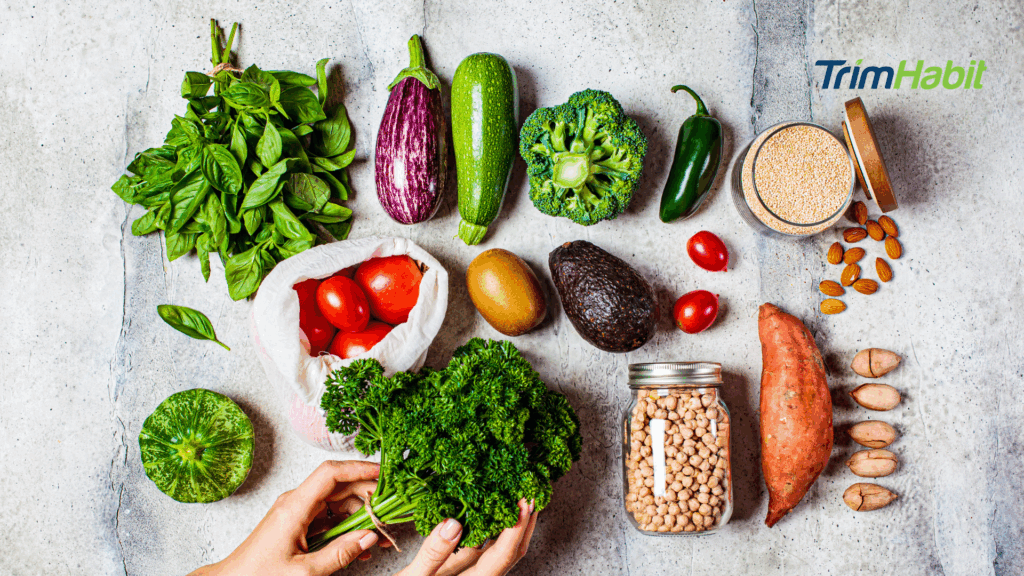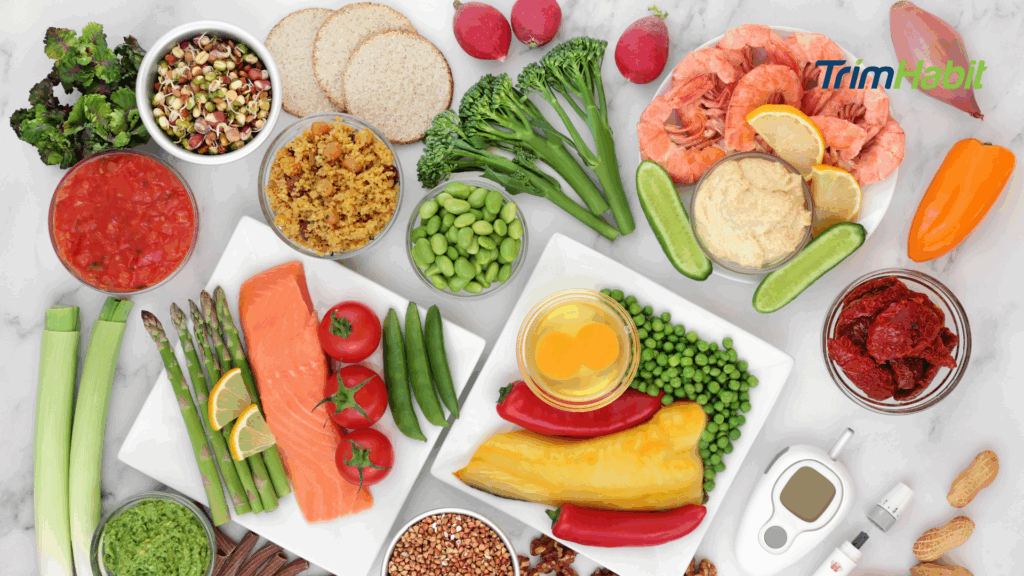Intermittent fasting is known today as a popular eating pattern that focuses on when you eat rather than what you eat. It is often praised for its ability to help people manage their weight and improve various aspects of health.
But does intermittent fasting work without exercise?
Learning how intermittent fasting affects the body in the absence of physical activity can provide clarity on whether it can still deliver results.
Understanding Intermittent Fasting
Intermittent fasting involves alternating between periods of eating and fasting. During fasting, the body shifts from using energy from recently consumed food to burning stored fat, as insulin levels drop and signal the body to use fat for fuel. This process helps break down fat for energy, potentially aiding in weight loss.
Does Intermittent Fasting Work Without Exercise?
The Myth: Exercise is Required for Intermittent Fasting to Be Effective
One of the most prevalent myths about intermittent fasting is that it can’t work unless it’s paired with a regular exercise routine. While exercise does provide numerous health benefits, such as improving cardiovascular health, building muscle, and increasing metabolism, it’s not a strict requirement for intermittent fasting to yield positive results.
Intermittent fasting primarily works through the principle of reducing the eating window, which leads to a natural decrease in calorie intake. In limiting when you eat, you may end up consuming fewer calories throughout the day, which can result in weight loss over time. Additionally, fasting triggers physiological processes like autophagy (cell repair) and improves insulin sensitivity, which are key factors in weight management and metabolic health, independent of exercise.
The Facts: Intermittent Fasting Works Independently of Exercise
Weight Loss: Intermittent fasting’s main mechanism is its ability to create a calorie deficit1. In restricting eating times, many people find it easier to eat fewer calories without having to consciously restrict food.
Improved Insulin Sensitivity: One of the benefits of intermittent fasting is its impact on insulin sensitivity2. When you fast, your body becomes more responsive to insulin, which helps manage blood sugar levels. This can be beneficial for weight management, especially in preventing the accumulation of body fat, without the need for additional exercise.
Fat Loss and Preservation of Lean Mass: Intermittent fasting can promote fat loss while helping preserve lean mass. During fasting periods, your body shifts to burning stored fat for energy, which can help reduce body fat percentage. While exercise, particularly resistance training, enhances muscle preservation, fasting alone has been shown to reduce body fat without significant muscle loss3.
Autophagy and Cellular Repair: Fasting encourages autophagy, a process where the body breaks down and removes damaged cells. This is a key factor in improving metabolic function and longevity, and it occurs without the need for exercise. Autophagy is particularly significant during extended fasting periods, where the body begins to repair itself by removing dysfunctional cells4.
What Do Studies Say?
The recent surge in interest has led many to explore intermittent fasting as a weight-loss strategy, emphasizing its potential benefits. However, most studies on intermittent fasting and weight loss primarily focus on time-restricted eating. Despite this limitation, a recent review suggests that reducing your eating window may help achieve modest weight loss.
Research published in 2023 showed that intermittent fasting can effectively support weight loss and help individuals maintain it over a year. Its impact is comparable to calorie tracking, according to clinical trial findings5.
One study done on mice showed that intermittent fasting, with or without high-intensity interval training (HIIT), helped male mice gain less weight on a high-fat, high-sugar diet, mostly by reducing fat without losing muscle6.
Research looking at caloric restriction (CR) alone and paired with exercise (CR+EX) in overweight men and women found that both led to similar fat loss—about 30% in men and 25% in women. Interestingly, exercise didn’t make a big difference in how fat was distributed or stored.
While exercise did boost aerobic capacity and improved insulin sensitivity, it didn’t preserve lean mass. Since intermittent fasting works similarly to caloric restriction, these findings highlight that fat loss mostly depends on creating an energy deficit. Exercise, while great for fitness, plays a smaller role in influencing fat loss or its distribution7.
Potential Drawbacks Of Intermittent Fasting Without Exercise
While intermittent fasting can work without exercise, there are limitations:
- Plateauing Results: Without exercise, your body may adapt to lower calorie intake, slowing progress over time.
- Muscle Loss: While some studies show that exercise doesn’t consistently preserve lean mass during calorie restriction, research suggests that pairing intermittent fasting with resistance training can help maintain lean body mass (LBM) and promote fat loss, making it an effective combination8.
- Reduced Energy Expenditure: Physical activity increases the number of calories burned daily, amplifying fasting’s effects. Without it, weight loss relies solely on dietary adjustments.
How To Maximize Results Without Exercise
If exercise isn’t part of your routine, it’s still possible to get effective results from intermittent fasting by focusing on specific dietary and lifestyle strategies. Without physical activity to enhance fat burning or muscle preservation, fine-tuning your food intake and fasting practices becomes essential to lose weight sustainably.
Prioritize Higher Protein Intake
Protein is crucial for preserving lean muscle mass, especially when you’re in a calorie deficit. Without exercise, the body is more likely to break down muscle tissue for energy, so increasing protein consumption can counteract this effect.
Why it helps: Protein has a high thermic effect, meaning your body burns more calories digesting it. It also helps you feel full longer, reducing the likelihood of overeating during eating windows.
Examples:
- Grilled chicken breast or turkey slices.
- Greek yogurt or cottage cheese with a handful of nuts.
- Plant-based options like lentils, chickpeas, or tofu stir-fry.
- Eggs and egg whites for breakfast or as a snack.
Choose Nutrient-Dense Foods
Without exercise to burn additional calories, every calorie you consume matters more. Nutrient-dense foods provide essential vitamins, minerals, and energy without unnecessary added sugars or unhealthy fats.
Why it helps: These foods provide sustained energy and prevent blood sugar spikes, making fasting periods more manageable.
Examples:
- Leafy greens (spinach, kale) and non-starchy vegetables (broccoli, zucchini).
- Whole grains like quinoa, brown rice, or oats.
- Healthy fats from avocado, olive oil, or chia seeds.
- Fresh fruits like berries, apples, or oranges.
Maintain Consistent Fasting and Eating Windows
Sticking to a regular fasting schedule helps your body adapt to fasting periods and improves its ability to shift into fat-burning mode.
Why it helps: Consistency trains your body to expect food at specific times, making it easier to manage hunger and energy levels. Skipping meals inconsistently, without a plan, can disrupt energy balance and lead to overeating later.
Examples of schedules:
- 16/8 schedule: Fast for 16 hours (e.g., 8 pm to 12 pm) and eat within an 8-hour window (e.g., 12 pm to 8 pm).
- Alternate-day Fasting: Eat normally one day and consume minimal calories (500-600) the next.
Stay Hydrated
Drinking enough water during fasting periods is crucial for maintaining energy levels, curbing hunger, and supporting fat metabolism.
Why it helps: Dehydration can mimic hunger signals, leading to overeating during eating windows.
Examples of hydration options:
- Water with lemon or cucumber slices.
- Herbal teas like peppermint or chamomile.
- Black coffee (in moderation, without added sugar or cream).
Focus on Fiber-Rich Foods
Fiber helps maintain digestive health, promotes satiety, and supports stable energy levels. It’s particularly important during intermittent fasting when meal timing is limited.
Why it helps: High-fiber foods keep you full longer, reducing the temptation to snack unnecessarily during eating periods.
Examples:
- Vegetables like carrots, celery, and Brussels sprouts.
- Fruits such as pears, apples, and raspberries.
- Whole grains like oats, barley, and quinoa.
- Seeds like flaxseed and chia seeds.
Avoid Processed Foods and Empty Calories
Processed foods are often high in refined sugars, unhealthy fats, and sodium, which can derail your progress and leave you feeling unsatisfied.
Why it helps: Minimizing processed foods ensures you’re fueling your body with quality nutrients that support fat loss and energy balance.
Examples to avoid:
- Sugary snacks like candy bars and pastries.
- Fast foods like fries, burgers with high-fat content, and pizza.
- Sugary drinks like sodas and energy drinks.
Get Adequate Sleep
Sleep plays a significant role in metabolism, hunger regulation, and fat storage. Poor sleep can disrupt hunger hormones like ghrelin and leptin, leading to increased appetite and potential weight gain.
Why it helps: A consistent sleep routine supports better fasting compliance and reduces cravings.
Tips for better sleep:
- Create a calming nighttime routine, such as reading or meditating.
- Avoid caffeine and screens at least an hour before bed.
- Stick to regular sleep and wake times, even on weekends.
Monitor Portion Sizes
Even during eating windows, overeating can negate the calorie deficit created by fasting.
Why it helps: Portion control ensures you don’t consume more calories than your body needs.
Practical tips:
- Use smaller plates to visually control portions.
- Avoid eating directly from large containers.
- Pre-plan meals to avoid impulsive overeating.
Practice Mindful Eating
Mindful eating focuses on tuning into your hunger and fullness cues, helping you avoid both under-eating and overeating. This practice is particularly valuable for avoiding disordered eating patterns, including eating disorders, which can sometimes emerge with restrictive eating schedules.
Why it helps: Mindful eating enhances satisfaction with smaller portions and reduces mindless snacking.
Tips:
- Chew each bite thoroughly and take breaks between bites.
- Eliminate distractions like phones or TV during meals.
The Verdict
Intermittent fasting can work without exercise, but its success depends on managing key factors such as food choices, meal timing, and lifestyle habits. Creating a calorie restriction during fasting periods and focusing on nutrient-dense, high-protein meals during eating windows can help with weight loss and maintaining or even improving body composition.
It is essential to plan intermittent fasting carefully, as poorly structured eating windows or inconsistent fasting can lead to challenges such as fluctuating body weight or disordered eating patterns. Without exercise, maintaining muscle mass may become more difficult, which makes a higher protein intake and consistent fasting practices even more important.
In conclusion, intermittent fasting can adjust body weight effectively through calorie restriction, even without exercise. Emphasizing balanced nutrition, hydration, and a structured fasting schedule can help achieve lasting results.









